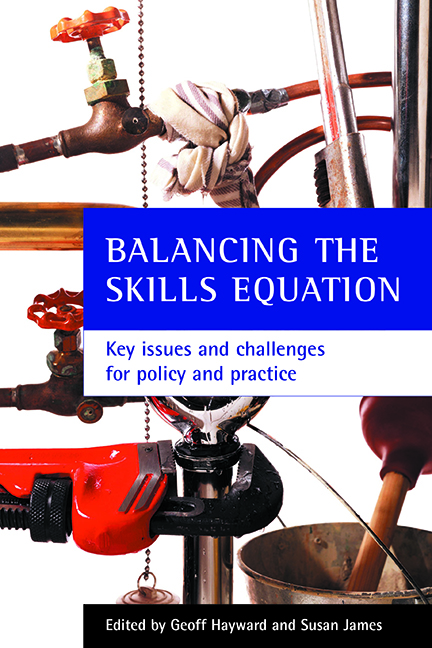Book contents
- Frontmatter
- Contents
- Acknowledgements
- Preface
- Notes on contributors
- one Producing skills: conundrums and possibilities
- two Fit for purpose? Sixty years of VET policy in England
- three The European policy regarding education and training: a critical assessment
- four ‘I can’t believe it’s not skill’: the changing meaning of skill in the UK context and some implications
- five Qualifying for a job: an educational and economic audit of the English 14-19 education and training system
- six Does apprenticeship still have meaning in the UK? The consequences of voluntarism and sectoral change
- seven Tradition and reform: modernising the German dual system of vocational education
- eight Learning in the workplace: reappraisals and reconceptions
- nine Interests, arguments and ideologies: employers’ involvement in education–business partnerships in the US and the UK
- ten Compatible higher education systems and the European labour market: Bologna and beyond
- eleven The expansion of higher education: economic necessity or hyperinflation?
- twelve Becoming a chef: the politics and culture of learning
- Index
- Also available from The Policy Press
six - Does apprenticeship still have meaning in the UK? The consequences of voluntarism and sectoral change
Published online by Cambridge University Press: 20 January 2022
- Frontmatter
- Contents
- Acknowledgements
- Preface
- Notes on contributors
- one Producing skills: conundrums and possibilities
- two Fit for purpose? Sixty years of VET policy in England
- three The European policy regarding education and training: a critical assessment
- four ‘I can’t believe it’s not skill’: the changing meaning of skill in the UK context and some implications
- five Qualifying for a job: an educational and economic audit of the English 14-19 education and training system
- six Does apprenticeship still have meaning in the UK? The consequences of voluntarism and sectoral change
- seven Tradition and reform: modernising the German dual system of vocational education
- eight Learning in the workplace: reappraisals and reconceptions
- nine Interests, arguments and ideologies: employers’ involvement in education–business partnerships in the US and the UK
- ten Compatible higher education systems and the European labour market: Bologna and beyond
- eleven The expansion of higher education: economic necessity or hyperinflation?
- twelve Becoming a chef: the politics and culture of learning
- Index
- Also available from The Policy Press
Summary
Introduction
In many countries throughout the world, apprenticeship is still regarded as the exemplary model for formation training. In the UK, a layperson’s understanding of apprenticeship, probably based on somewhat hazy recollections of the experiences of a male member of their family in the 1950s or 1960s, would probably cohere with the following definition:
[A]pprenticeship is a method of employment and on-the-job [usually complemented by off-the-job] training which involves a set of reciprocal rights and duties between an employer and trainee. (Gospel, 1995, p 32)
This definition would probably include the belief that apprenticeship takes place over a substantial time period (at least three years); that it leads to recognised qualifications (typically awarded by a body such as City and Guilds); and is predominantly available to young males located in craft, technical and industrial settings. Unlike many other European countries, apprenticeship in the UK still operates at a distance from the national education system. Yet since 1994, successive governments have sought to raise its profile through their funding of the Modern Apprenticeship (MA) programme. This chapter explores the extent to which contemporary apprenticeships retain any semblance to their historical predecessors and whether, as a model for formation training, apprenticeship still has relevance for young people and employers today.
This chapter is organised in four sections. Section One provides a brief historical overview of apprenticeship in the UK. Section Two focuses on aspects of contemporary participation to indicate how the current picture differs from the past in terms of apprentice characteristics and the sectors in which apprenticeship is available. Section Three identifies some of the issues and problems emerging from the MA and uses case studies from the engineering and banking sectors to illustrate the types of provision which currently count as apprenticeship. Finally, in the Conclusion, we suggest that the flexible and weakly regulated model of apprenticeship, which has emerged in the UK, has given rise to provision of widely varying quality. We suggest that there are considerable challenges for the policy makers promoting this approach, the main one being the need to ensure that all apprentices have access to the same high standards of provision currently available only to a minority of participants.
- Type
- Chapter
- Information
- Balancing the Skills EquationKey Issues and Challenges for Policy and Practice, pp. 101 - 116Publisher: Bristol University PressPrint publication year: 2004
- 2
- Cited by

